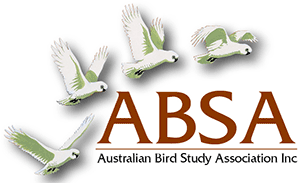A long-term study of a Western Magpie Cracticus tibicen dorsalis population: breeding and productivity
| Posted: |
23/09/2022 |
| Author(s): |
Alan Lill, Eleanor Rowley, Ian Rowley |
The widespread Australian Magpie Cracticus tibicen exhibits geographical variation in aspects of its sociality and
demography. We conducted a 12-year investigation of a colour-banded population of a less well-known subspecies,
the Western Magpie C.t. dorsalis, to increase understanding of this variation: this report focuses on breeding and
productivity. Most female dorsalis magpies first bred only when nearly 2 or 3 years old and remained reproductive for
6-12 or more years. As in many other bird species, such delayed reproductive investment may be an adaptive strategy
driven by intense competition among population members that have a long breeding lifespan. Nests were mainly built
10-20 m above ground level in eucalypts, providing protection for the young from ground predators. Initiation of females’
first clutches of the season peaked from late August to mid-September, the timing resembling that of magpies elsewhere
in sub-tropical and temperate Australasia. Nest construction, incubation and nestling brooding were conducted solely by
the nesting female and most nestling provisioning was also performed by the apparent mother. However, some females
were assisted in feeding their presumed offspring by up to at least two adult males during a breeding season and six
males during their monitored breeding lifespan, as well as sometimes by other adult females and immature individuals.
Some adult males provisioned the broods of one or two females during a season and of up to five females during their
monitored lifespan. Some males provisioned young in up to seven broods produced by a specific female during the
study, indicating that in this plural-breeding population there may be long-term associations between specific males and
females. Some fledging occurred in nearly half of the broods produced in a season. On average, adult females produced
0.8 fledglings per season and 3+ yearlings in the substantial proportion of their breeding life that was documented.
Many features of magpie breeding appear to be widespread (e.g. breeding phenology, preferred nest sites and the
exclusively female nest-building, incubation and nestling brooding regimes). The present investigation also showed that
adult Western Magpies share features of their offspring care regime with co-operatively breeding magpie populations
elsewhere in Australia, but other studies have indicated that they may differ strikingly from such populations in their
dispersal and extra-group paternity patterns.
>> Download Abstract |
File Size: 225 KB
>> Download Complete PDF | File Size: 421 KB
